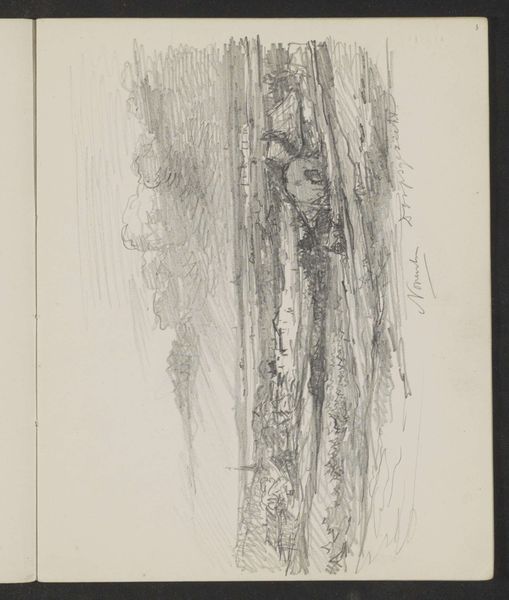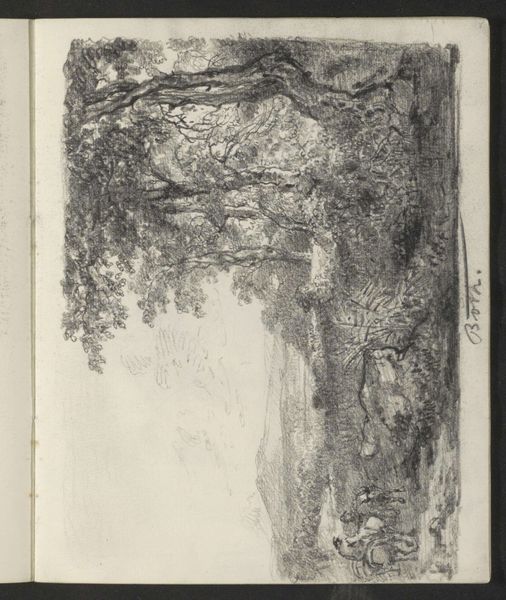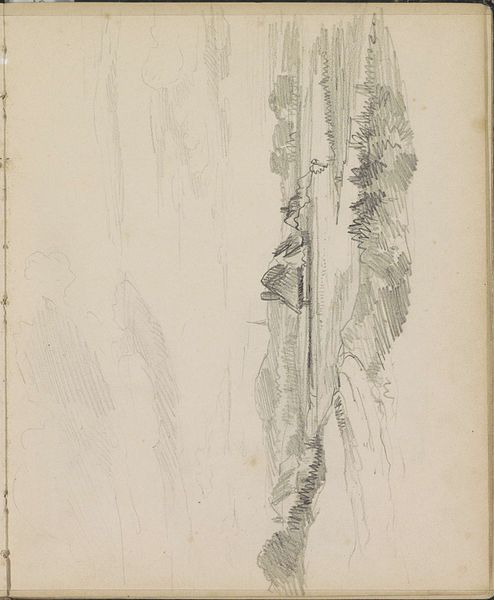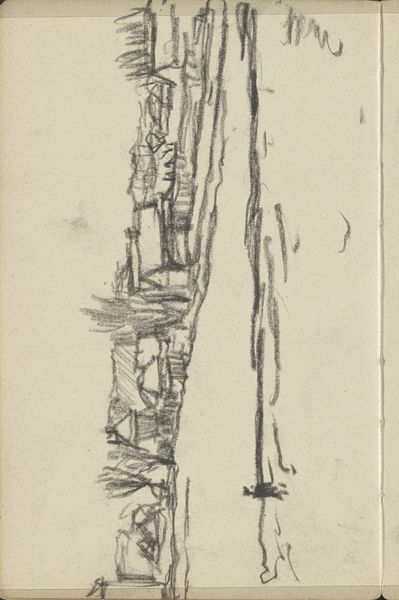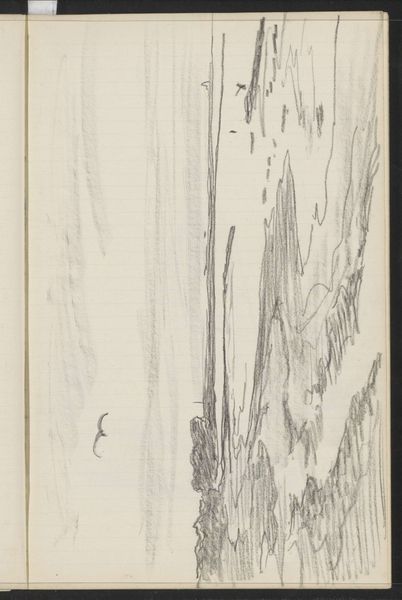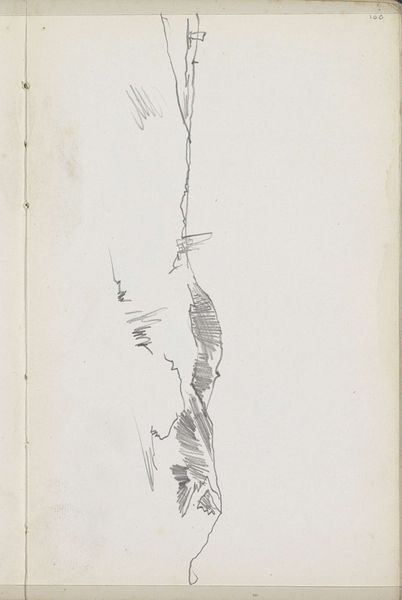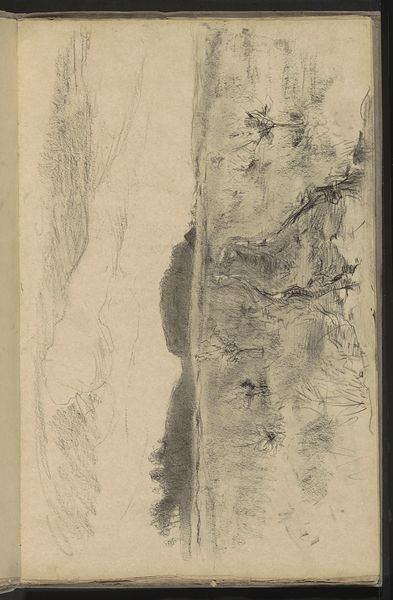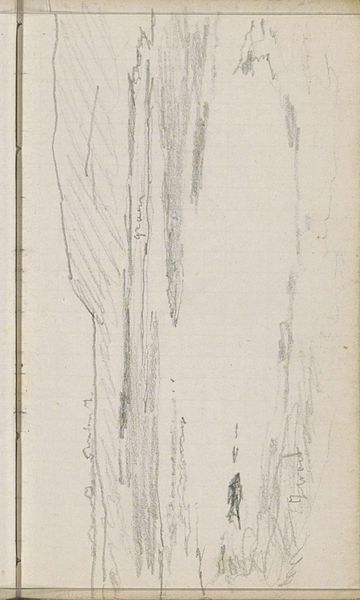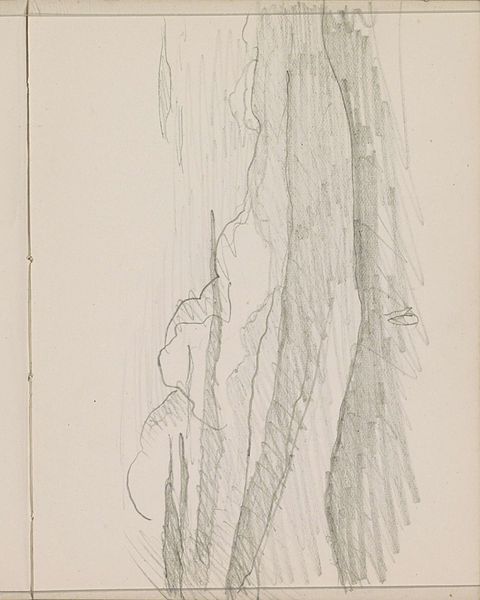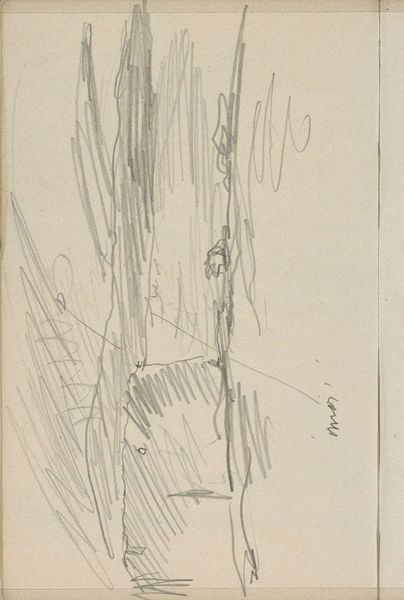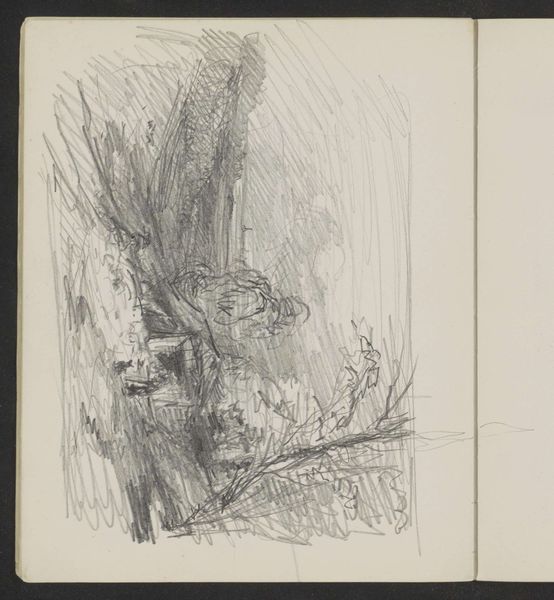
drawing, pencil
#
drawing
#
amateur sketch
#
light pencil work
#
pen sketch
#
incomplete sketchy
#
landscape
#
personal sketchbook
#
ink drawing experimentation
#
pen-ink sketch
#
pencil
#
sketchbook drawing
#
sketchbook art
#
fantasy sketch
#
realism
Copyright: Rijks Museum: Open Domain
Curator: The atmosphere feels quite fragile. A pencil drawing tends to project a very personal quality, doesn't it? Editor: It does, it's a kind of direct access to the artist's thoughts, as in this work by Maria Vos entitled "Landschap met plattelandswoningen" created around 1886-1890. Currently housed at the Rijksmuseum. The scene depicts rural dwellings amidst a landscape, rendered with delicate lines and shading. Curator: I see layers upon layers. A very tentative structure rises on the right, as if reaching toward meaning that cannot be fully defined, while to the left the structure is so pale that we barely register its presence. This drawing embodies that in-between moment, teetering between solidity and ephemerality. It makes me wonder, what is the emotional logic of the work? Editor: Sketches like this often served a vital function in an artist’s wider practice, capturing initial impressions or compositional ideas, particularly at a time when women artists negotiated both societal expectations and artistic ambition. Do the incomplete parts show restraint because that would be what was considered appropriately "ladylike"? Or is she just testing, experimenting with light and form, building up layers with these subtle strokes? Curator: Subtlety isn't weakness, after all. These structures almost seem to weep downwards, while other parts evoke strength. Perhaps this embodies Vos's emotional interaction with the land, expressing a subtle interplay of vulnerability and grounded strength. The artist isn't just drawing the structure of a house but trying to grasp how those forms are affected by time, perhaps loss, as so many historical documents remind us to acknowledge. Editor: Indeed, these sketches often have social context as well. Considering that female artists like Maria Vos often faced limited access to formal training and exhibition opportunities during the late 19th century, the act of sketching itself was a way to study the world. Curator: I wonder, did those limitations grant her the freedom to see and to express reality in less formal ways? Maybe not trying too hard allowed for that beautiful balance between dark, distinct marks on the right, and the subtle shading on the left. A perfect example of not having to fill the space with the appearance of meaning when absence allows for far greater depth of emotion. Editor: Absolutely, and examining such pieces, usually overlooked, can open discussions on representation, agency, and the evolving role of women in shaping artistic landscapes, reminding us of both what was and what could be.
Comments
No comments
Be the first to comment and join the conversation on the ultimate creative platform.
